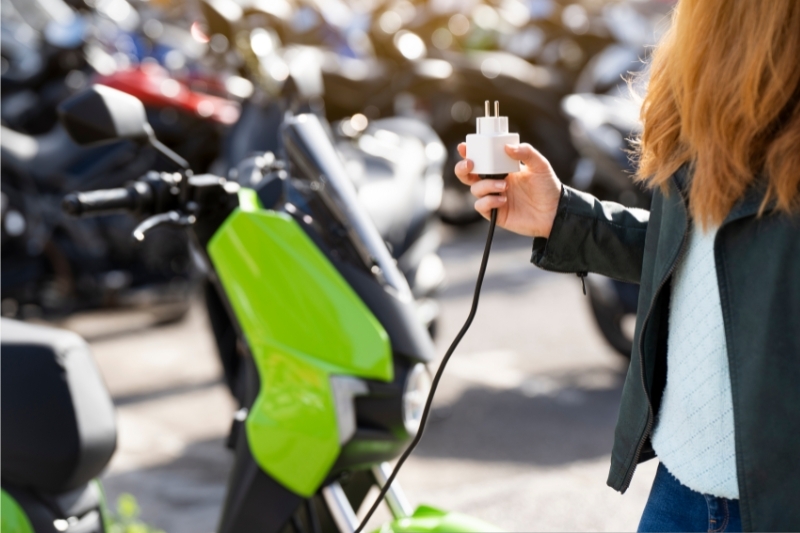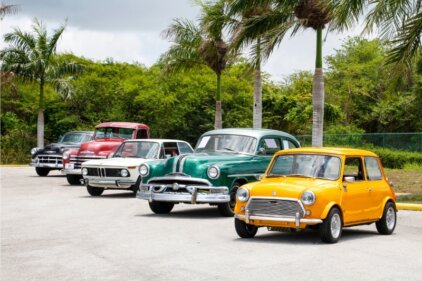As the world grapples with the pressing issues of climate change and environmental sustainability, the transportation sector has become a focal point for innovation and transformation. At the forefront of this revolution are electric motorcycles, which are poised to redefine the way we experience the open road. In this article, we will delve into the captivating world of electric motorcycles, exploring their advantages, the key players shaping the industry, and the technological advancements that are paving the way for a more sustainable future.
Advantages of Electric Motorcycles
Electric motorcycles offer a myriad of advantages that make them an increasingly attractive option for both commuters and thrill-seekers alike. Firstly, their zero-emission operation contributes significantly to the reduction of greenhouse gas emissions, making them a more environmentally friendly alternative to traditional petrol-powered bikes. Additionally, the instant torque and smooth acceleration provided by electric motors offer a thrilling and responsive riding experience, without the need for noisy internal combustion engines.
Furthermore, the low maintenance requirements and reduced fuel costs associated with electric motorcycles make them a practical and cost-effective choice for everyday use. The absence of complex mechanical components and the simplicity of the electric drivetrain translate into fewer moving parts, resulting in reduced maintenance and repair expenses. This, in turn, can lead to significant long-term savings for owners, making electric motorcycles a financially savvy investment.
The Rise of Electric Motorcycles in the Market
The global electric motorcycle market has witnessed a remarkable surge in recent years, driven by a growing awareness of environmental sustainability and the increasing availability of high-performance electric models. Prominent industry players, such as Harley-Davidson, Zero Motorcycles, and Energica Motor Company, have made substantial investments in the research and development of electric motorcycle technology, introducing a wide range of models that cater to diverse rider preferences and needs.
The rising popularity of electric motorcycles can be attributed to several factors, including improved battery performance, extended range capabilities, and the integration of advanced features like regenerative braking and smartphone connectivity. As consumer demand continues to grow, we are witnessing a proliferation of electric motorcycle models, each offering unique design, performance, and price points to suit the preferences of a diverse customer base.
Key Players in the Electric Motorcycle Industry
The electric motorcycle industry is home to a dynamic ecosystem of innovators and industry leaders, each contributing to the advancement of this transformative technology. Some of the key players in this space include:
- Harley-Davidson: The iconic American motorcycle brand has made a bold move into the electric motorcycle market with its LiveWire model, showcasing its commitment to embracing the future of sustainable transportation.
- Zero Motorcycles: A pioneering California-based company that has been at the forefront of the electric motorcycle revolution, offering a range of high-performance models that cater to both urban commuters and off-road enthusiasts.
- Energica Motor Company: An Italian manufacturer known for its sleek and powerful electric superbikes, Energica has been instrumental in pushing the boundaries of electric motorcycle performance and design.
- Yamaha Motor Company: The renowned Japanese motorcycle manufacturer has entered the electric motorcycle market with its innovative E01 and EC-05 models, leveraging its expertise in motorcycle engineering to deliver cutting-edge electric solutions.
- Gogoro: A Taiwanese startup that has made a significant impact in the electric two-wheeler market, with its innovative battery-swapping infrastructure and compact, city-friendly electric scooters.
These industry leaders, along with a growing number of startups and established manufacturers, are collectively shaping the future of electric motorcycle technology, driving innovation and setting new standards for performance, efficiency, and sustainability.
Technological Advancements in Electric Motorcycle Design
The rapid evolution of electric motorcycle technology has been a driving force behind the increased adoption and popularity of these sustainable vehicles. Advancements in battery chemistry, motor efficiency, and electronic control systems have resulted in significant improvements in range, power, and overall riding experience.
One of the key technological breakthroughs has been the development of high-energy-density lithium-ion battery packs, which have enabled electric motorcycles to achieve longer ranges and faster charging times. Additionally, the integration of regenerative braking systems has allowed for the recovery of kinetic energy during deceleration, further extending the usable range of these vehicles.
Innovative motor designs, such as the use of permanent magnet synchronous motors and high-efficiency induction motors, have also contributed to the impressive performance characteristics of electric motorcycles. These advanced motor technologies, combined with sophisticated electronic control systems, have enabled seamless power delivery and responsive handling, providing riders with an exhilarating and dynamic riding experience.
Moreover, the integration of advanced telematics and connectivity features, such as smartphone integration, GPS navigation, and real-time performance monitoring, have further enhanced the overall user experience and transformed electric motorcycles into highly intelligent and connected vehicles.
The Future of Electric Motorcycles
As we look towards the future, the electric motorcycle landscape is poised for even greater advancements and widespread adoption. Industry experts predict that the coming years will witness a significant expansion of the electric motorcycle market, driven by continued technological improvements, increased affordability, and a growing consumer appetite for sustainable transportation solutions.
One of the key areas of focus will be the development of longer-range battery packs, which will address the range anxiety often associated with electric vehicles. Researchers and manufacturers are actively exploring new battery chemistries, such as solid-state and lithium-sulfur technologies, that promise to deliver increased energy density and faster charging capabilities.
Additionally, the integration of autonomous and semi-autonomous features, such as advanced rider assistance systems and collision avoidance technologies, will play a crucial role in enhancing the safety and convenience of electric motorcycles. These advancements, combined with the continued refinement of electric motor and control systems, will further improve the overall riding experience and make electric motorcycles an even more compelling choice for both urban commuters and enthusiast riders.
Electric Motorcycle Charging Infrastructure
The widespread adoption of electric motorcycles is closely tied to the development of a robust and accessible charging infrastructure. As the number of electric motorcycles on the roads continues to grow, the need for a comprehensive network of charging stations becomes increasingly important.
Governments, municipalities, and private entities are actively investing in the expansion of charging infrastructure, ensuring that electric motorcycle owners have access to convenient and reliable charging options. This includes the deployment of public charging stations in high-traffic areas, such as city centers, shopping districts, and transportation hubs, as well as the integration of charging capabilities in residential and commercial buildings.
The emergence of fast-charging technologies, capable of replenishing battery packs in a matter of minutes, has further alleviated the concerns surrounding charging times and range limitations. This, in turn, has made electric motorcycles a more practical and viable option for longer-distance travel and inter-city commuting.
As the charging infrastructure continues to evolve and become more ubiquitous, the barriers to electric motorcycle ownership will continue to diminish, paving the way for a future where sustainable transportation is the norm rather than the exception.
Environmental Benefits of Electric Motorcycles
The environmental benefits of electric motorcycles are a significant driving force behind their growing popularity. By eliminating direct tailpipe emissions, electric motorcycles play a crucial role in reducing greenhouse gas emissions and improving air quality, particularly in urban areas where pollution levels are often highest.
The shift towards electric motorcycles not only benefits the immediate environment but also contributes to the broader goal of mitigating climate change. As the world’s energy grids become increasingly powered by renewable sources, the environmental impact of electric vehicles, including motorcycles, will continue to improve, making them an even more sustainable transportation option.
Moreover, the reduced energy consumption and lower maintenance requirements of electric motorcycles translate into a smaller carbon footprint across their entire lifecycle, from manufacturing to disposal. This holistic approach to sustainability ensures that electric motorcycles are not just a cleaner solution for the road but also a more environmentally responsible choice for the planet.
As the demand for sustainable transportation solutions continues to grow, the environmental benefits of electric motorcycles will become an increasingly compelling factor for consumers, driving further adoption and accelerating the transition towards a greener future.
Electric Motorcycle Regulations and Incentives
The widespread adoption of electric motorcycles is also influenced by the regulatory landscape and the various incentives and policies introduced by governments and policymakers. In many regions, there has been a concerted effort to promote the use of electric vehicles, including motorcycles, through the implementation of supportive policies and financial incentives.
These incentives can take the form of tax credits, rebates, or subsidies that help offset the initial cost of purchasing an electric motorcycle. Additionally, some jurisdictions have introduced exemptions or reduced fees for electric vehicles, such as lower registration costs or preferential access to restricted traffic zones.
Regulatory frameworks have also been established to encourage the development and deployment of electric motorcycle charging infrastructure. Mandates for the installation of charging stations in new residential and commercial developments, as well as the provision of funding for public charging networks, have helped to create a more enabling environment for electric motorcycle adoption.
Furthermore, some regions have introduced stricter emissions standards and regulations that favour the use of zero-emission vehicles, effectively driving the transition towards electric motorcycles and other sustainable transportation options.
As policymakers continue to recognise the importance of transitioning to a more sustainable mobility landscape, we can expect to see an expansion of these supportive policies and incentives, further accelerating the widespread adoption of electric motorcycles.
Conclusion: Embracing the Future of Transportation
In the ever-evolving world of transportation, electric motorcycles have emerged as a transformative force, offering a glimpse into a future where sustainable mobility is the norm. Through their combination of environmental benefits, technological advancements, and practical advantages, electric motorcycles are poised to redefine the way we experience the open road.





